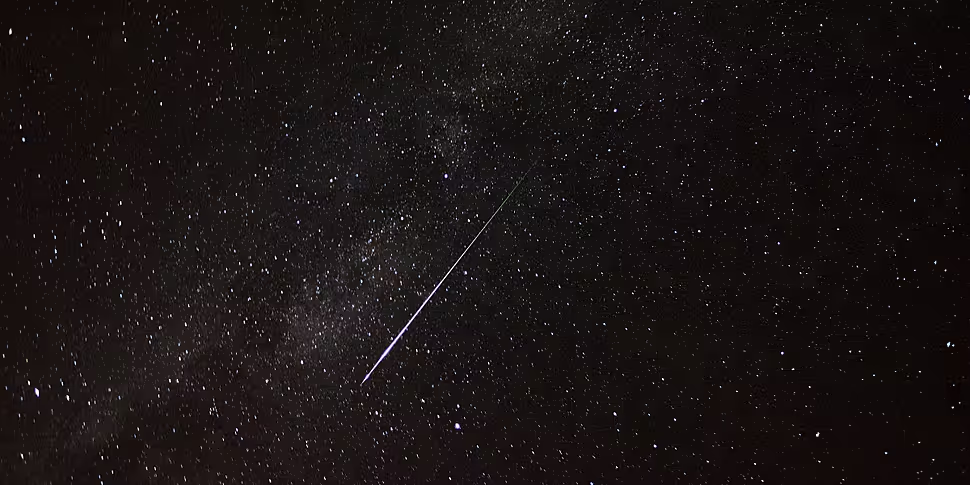Stargazers enjoyed a rare treat last night as the clear night skies revealed a ‘fireball’ while many were watching the latest band of Starlink satellites pass by.
Astronomy Ireland said the cold snap made for a “magical night sky” – with the International Space Station, Starlink satellites and Jupiter all clearly visible.
The meteor was seen in the skies at around 6:09pm, with many people uploading images and videos to social media shortly after.
I decided to get some shots of the sky tonight.
I saw a very lovely moon, Jupiter hanging out right next to it, the ISS and Starlink, and this visitor turned up.
A bright fireball heading east over my head to break up over the sea. pic.twitter.com/WsyxE4Tv0n
— James Kenny (@jamesmkenny) January 18, 2024
PJ O’Keefe was filming the Starlink satellites in Carlow when he managed to capture the Meteor. 6:09pm was the timestamp. Check out the video! pic.twitter.com/GbWFUAYhoB
— Carlow Weather (@CarlowWeather) January 18, 2024
Meteor lights up the sky in Dublin City captured by our Brian Boru webcam at 18.11pm this evening.#meteor #brianboru #Dublin @AstronomyIRL @SnowbieWx pic.twitter.com/b1KgHQlMnP
— Livefromireland Tourism Webcams (@Livefromireland) January 18, 2024
While meteors and shooting stars are not that uncommon, the cloud cover in Ireland means that many people rarely see them.
Meanwhile, the Starlink satellites are best viewed in the first few weeks after they are launched, while they remain in their closest orbit to Earth.
Here’s one from my door cam. Got a good look at it. Massive. pic.twitter.com/rZSe58jm6d
— Darrin O'Toole (@darrinotoole) January 18, 2024
@AstronomyIRL stunning little viewing session this evening, thanks for the tips! Busy sky – #Starlinks, a couple of other satellites, and then the brightest #meteor I’ve ever seen (on the right hand side of second photo). Not bad for a Thursday evening’s #astronomy! pic.twitter.com/4hCZeyz7wP
— Sam Kirwan 📱📈 (@KirwanDigital) January 18, 2024
A magical nightsky tonight. The upside of cold weather. If you’ve never seen the planet Jupiter then just look at the moon now. You’re also looking at Jupiter. First ISS pass just gone over, Starlinks coming up next in the south at 1804. magazine@astronomy.ie if you have photos.
— Astronomy Ireland 🪐 🔭 🛰 (@AstronomyIRL) January 18, 2024
The latest band of 23 satellites left Earth from Cape Canaveral in San Francisco on Monday.
To date, some 5,739 Starlink satellites have been launched, with 5,353 currently in orbit.
Astronomers have warned that the satellites could ruin our vision of the night sky, with Astronomy Ireland describing them as the “vermin of the sky”, even if they are “quite enthralling” to see.









